Living here in Italy since 1965 has allowed me to discover and enjoy the country - including Sicilia and Sardegna- in depth. Full disclosure on my 25 year old website.
Click underlined links to visit websites -most are in English too- of places mentioned for full information
Travel was more adventurous and uncertain back then and if a planned excursion didn’t work out, you could always try again. The first time I took the train to Naples to visit the Archeological Museum we found it closed due to a sciopero. The next year there was a major strike of the garbage collectors that closed down the city. The third try was blocked due to a shoot-out between a police car and bandits so with a bus full of students we detoured and had a safe visit at the excavations of Pompeii.
As Enrichment Speaker on Azamara’s luxury small ships I now enjoy itineraries of 8 to 15 days that bring me to a series of different port cities where I can revisit favorite places and/or discover new ones which I am happy to share with my subscribers and readers. Click here for a complete list of my illustrated enrichment talks given over the past 18 years, also available for groups on ZOOM.
Here are a few of my Naples favorites- all within walking distance from the ship’s dock.
The Archeological Museum holds a huge collections of objects from Pompeii’s excavations as well as the Farnese collection of antique statuary -some of which were recently exhibited in Rome.
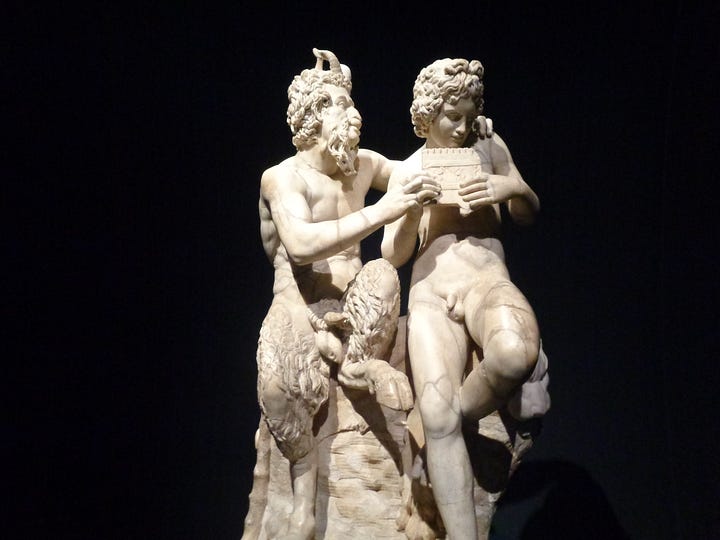
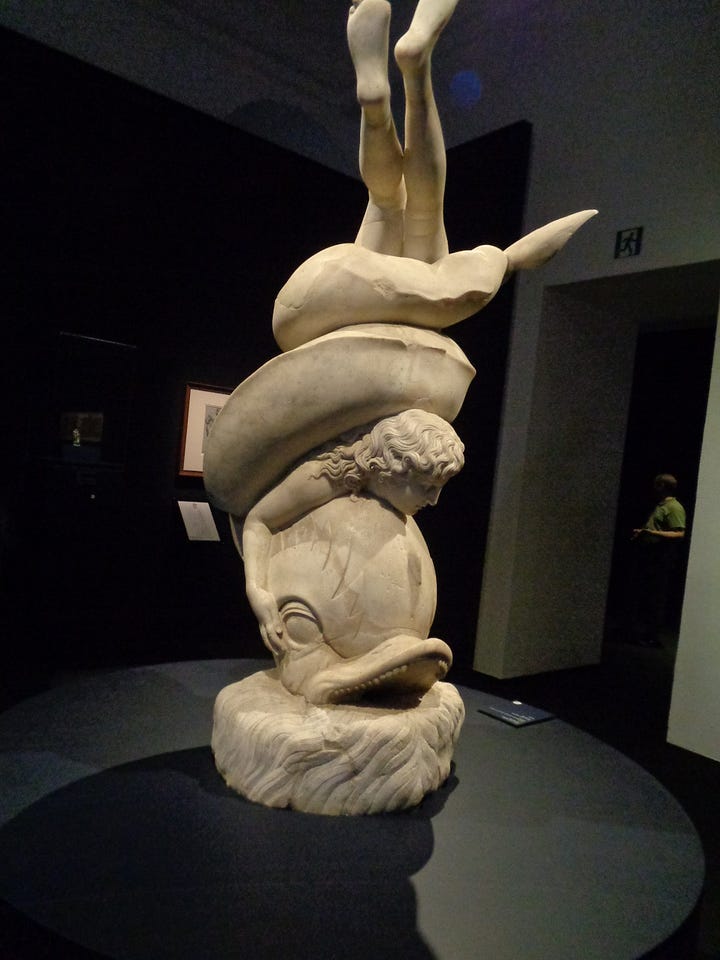

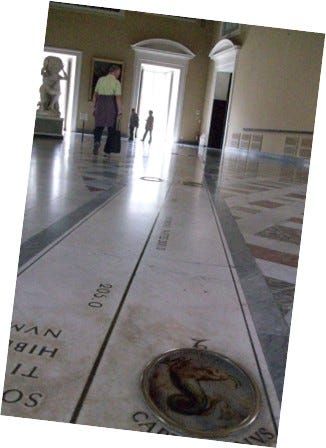
There is also a hall with a meridian made using brass inserts on the floor -a scientific device that measured the suns’ rays and the earth’s movement throughout the year. Created in 1791 by G. Cascella, its gnomonico hole is located at 14 metres and it is one of the 10 largest meridians in the world built between 1467 and 1895.
exterior of Santa Maria la Nova
The ancient church and seminary complex of Santa Maria la Nova dating from the 1200s has been deconsecrated, completely restored and is now used as a museum of contemporary religious art and a congress center. Here on the stairs to the top level I met two tourists from Ohio who had just arrived to stay in what was once the Abbot’s quarters, now transformed along with a few other rooms, into a (poorly reviewed) B&B.
The monumental complex includes chapels, the magnificent church with transparent chairs that make it seem even larger, a nativity/presepe collection, ancient refectory and the former sacristy full of vestments and silver.
Make your way up to the soprano choir to look down into the vast church then wander in the labyrinth of narrow corridors where the monks once slept in tiny cells which now hold a collection of modern ecclesiastical art, some of it of dubious quality.

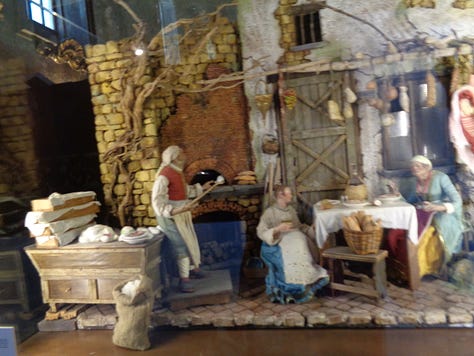
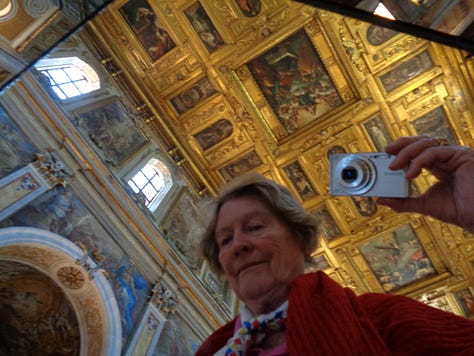
There are two cloisters brightened by recently restored frescoed walls, but the prize goes to the coffered and carved ceiling made between 1598 and 1603 decorated in pure gold. The 46 panels embedded in the golden carpentry are paintings that are an anthology of late Renaissance art in Naples.
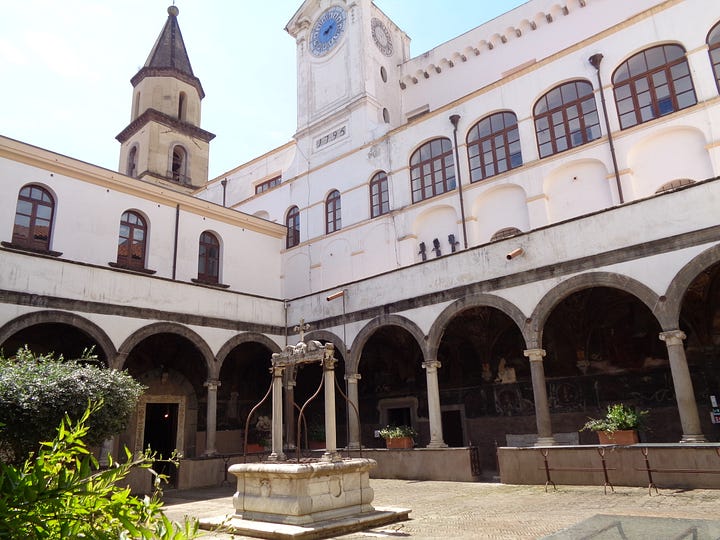
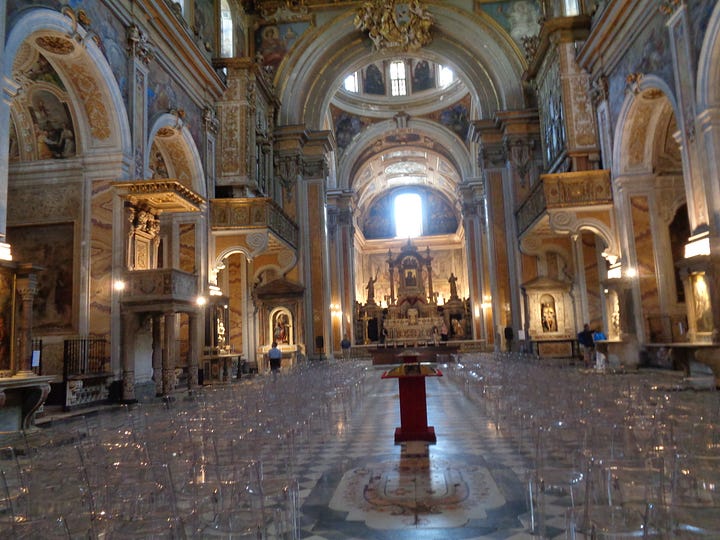
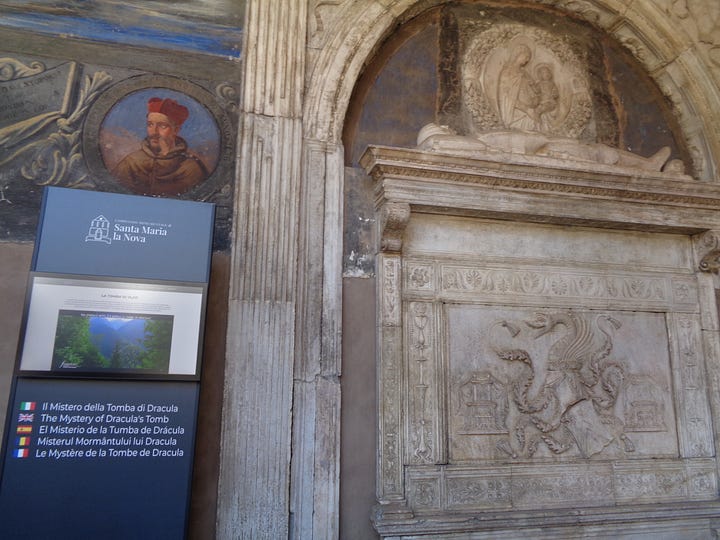
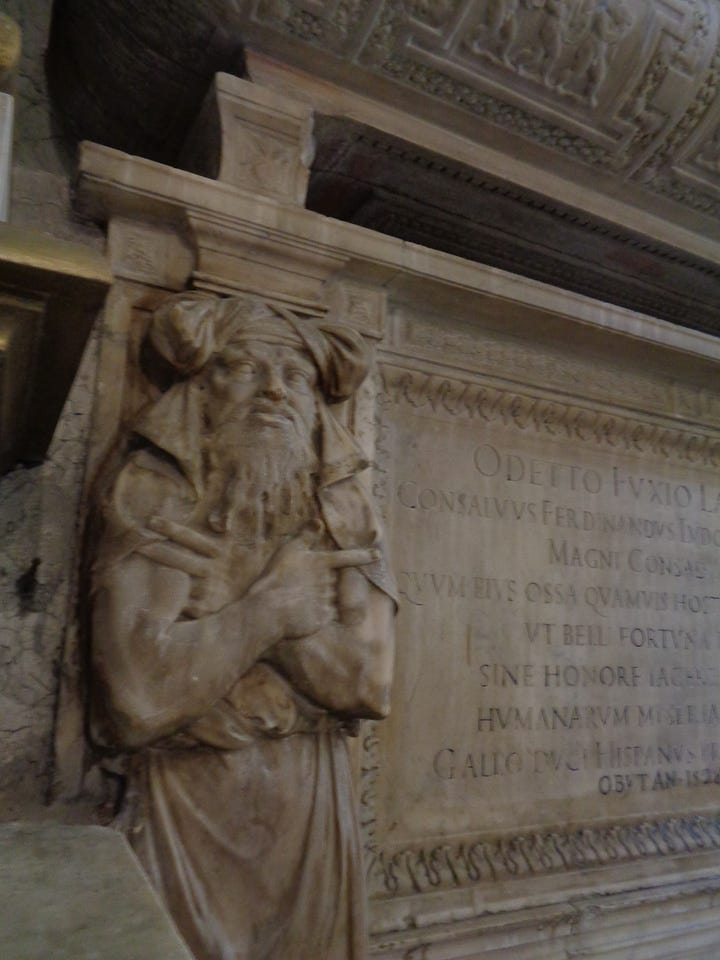
For those interested in alchemy, tales of Dracula and medieval mysteries a monumental tomb in the corner of the cloister cannot be missed. There is a video and audio guide next to the tomb of Matteo Ferrillo which has recently been studied by scholars who indicate it as the final resting place of the remains of Vlad, the Impaler, better known as Dracula.
Another new museum complex can be found in the former Banco di Napoli building on busy via Toledo, constructed in 1940 in perfect Fascist style by Marcello Piacentini, top architect of the regime.
It is part of the Intesa San Paolo Bank’s Gallerie d’Italia group of museums set up in several Italian cities. Here modernist architecture and ancient art are combined with a restaurant and cafe for full immersion in Italian culture. Not to be missed are the special exhibits held throughout the year. This Caravaggio “Martyrdom of Saint Orsola” is part of the museum’s permanent collection.
If you only have time for one stop, make it the Sansevero chapel to see the most beautiful statue, one that rivals anything by Michelangelo or Canova. The Veiled Christ was created in 1753 for the chapel of the 7th prince of Sansevero, Raimondo di Sangro, by sculptor Giuseppe Sanmartino. Contemporaries thought he must be a magician for the transparent shroud over Christ’s body could only be “the result of some alchemical process of marbelisation”.
The Veiled Christ, one of the several masterpieces of sculpture housed in the Sansevero chapel in the heart of historic Napoli. I remember visiting 15 years ago - it was difficult to find then- but now most people use google. Click on the underlined link to see other photos and information on the official website.
What are your favorite places in Naples? Your comments, questions and suggestions are welcome.
Recommended books in Italian - “Il Cielo in Basilica-la meridiana della Basilica di S. M. degli Angeli, Roma” Mario Catamo, Cesare Lucarini, 2002
“L’evoluzione della misura oraria del tempo, le meridiane di Civita Castellana”, M. Catamo, F. Proietti, 2008
Hope all my subscribers and readers are enjoying a pleasant summer. Why not share a link with your friends-even those who only do armchair travel- who love art, history, curiosities. If you are visiting Rome’s port of Civitavecchia or medieval Viterbo, check out my Voicemap.com audio guides.







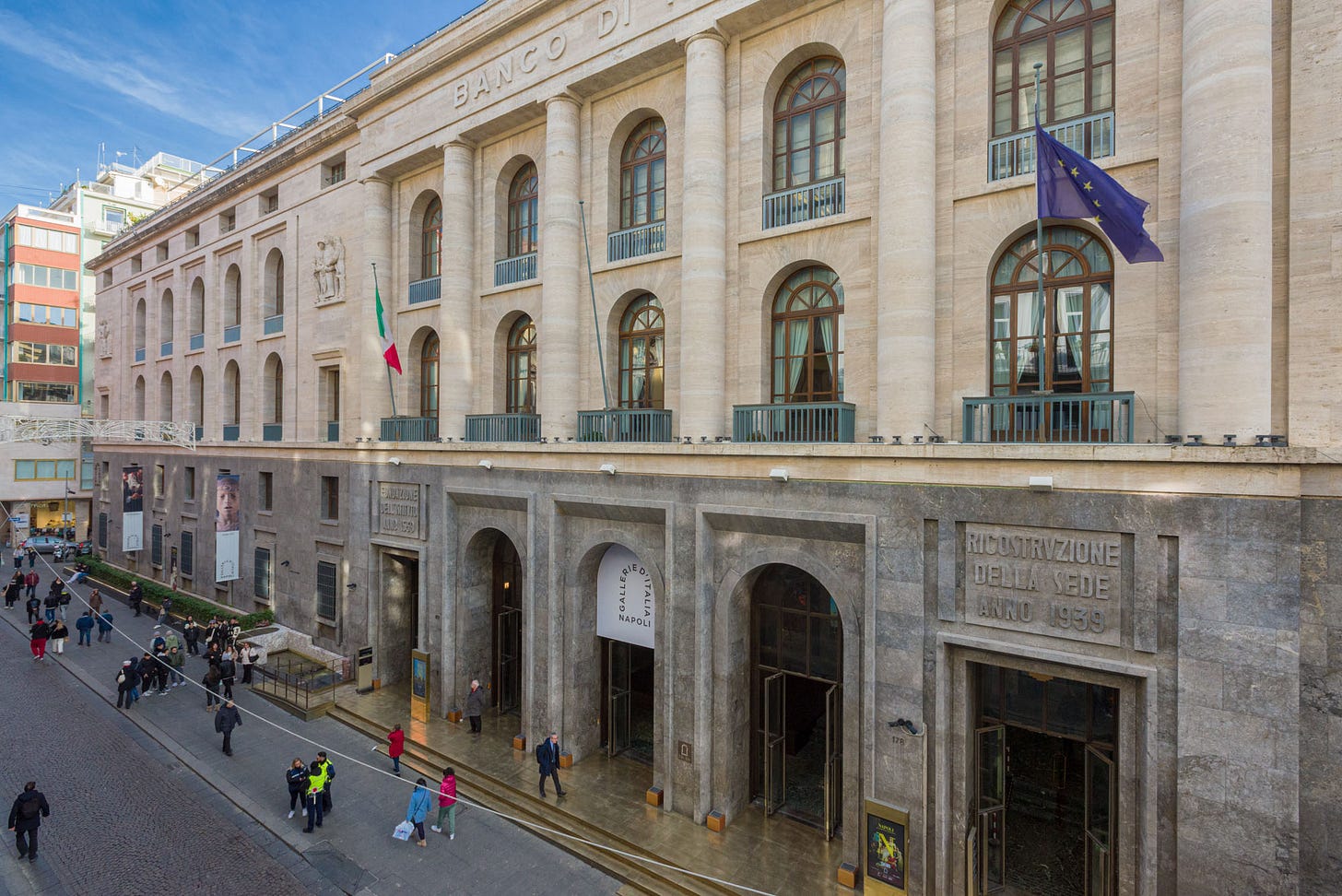
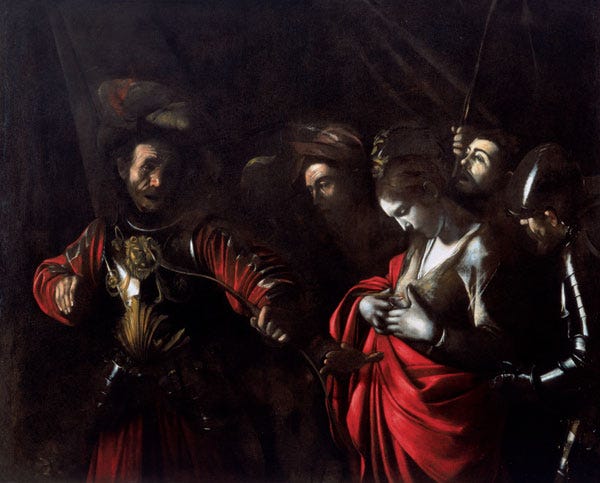

Sansevero and the archeological museum are among my favorites. I have also enjoyed the royal palace and the museum and palazzo at Capodimonte. The heights of the Vomero and Posillipo also provide nice changes from the historic center.
You are spot on that traveling is less challenging and adventurous since the GPS “navigatore” was made widely available on phones…
Thanks for sharing so many years of experience with us! Your insights are much appreciated!
Wonderful tips. And who knew Dracula would turn up in Napoli!